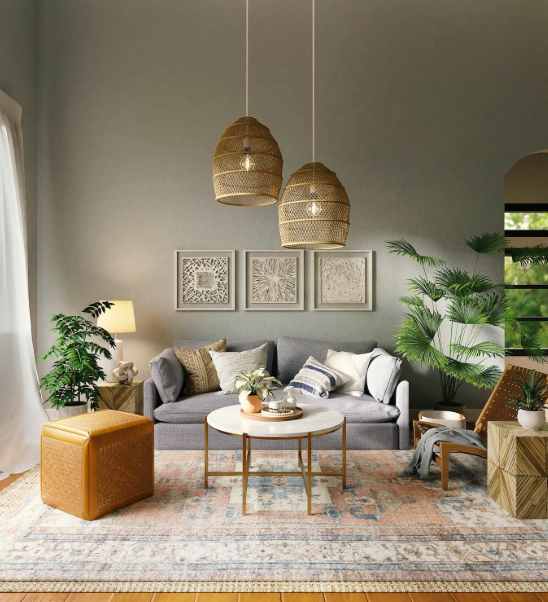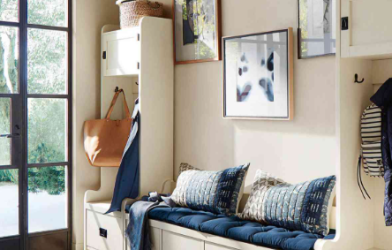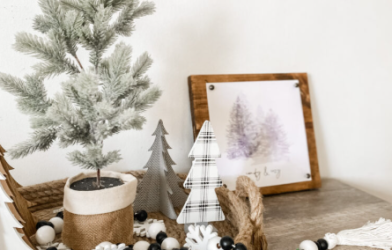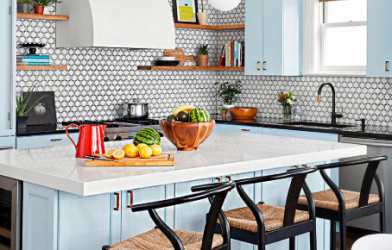Subtotal $0.00
When it comes to decorating your home, good design goes beyond aesthetics. It creates a space that is functional, inviting, and reflective of your personal style. While there’s plenty of room for creativity, following a few essential decorating principles can help you achieve the look you want without feeling overwhelmed. Here are five decorating rules that interior designers swear by to help you create a balanced and beautiful space.
1. Embrace the Rule of 3
The “Rule of 3” is one of the most widely recognized principles in interior design. It involves arranging items in odd numbers to create visual harmony. This rule applies to everything from the layout of a room to color schemes, patterns, and even furniture arrangements.
When styling surfaces like coffee tables, side tables, or bookshelves, group items in threes. Odd-numbered arrangements are naturally more appealing and easier on the eyes. While three is often ideal, you can also experiment with five, seven, or even nine, depending on the size of the space and the items being arranged.
2. Plan Your Space Thoughtfully
Space planning is a crucial part of any interior design project. Without proper planning, you risk overcrowding a room or losing the flow of traffic. It’s important to consider how the space will be used and how people will move through it.
If you’re working with a small room, it’s especially important to make the most of every corner. Start by measuring your furniture and space, and try different layouts. You can plan your space in several ways: drawing it out on graph paper, using painter’s tape to map out furniture arrangements on the floor, or using free online space-planning tools.
3. Identify the Focal Point of the Room
Every room needs a focal point—a feature or item that immediately draws attention when you walk in. This could be a fireplace, a large piece of artwork, a TV, or even a striking piece of furniture.
Once you identify your focal point, arrange your furniture and decor around it. If your room has multiple focal points, make sure they are balanced and don’t compete for attention. Planning your space with this in mind ensures that your room feels cohesive and well thought out.
4. Choose Fabrics and Rugs Before Paint Colors
Selecting fabrics and rugs before painting is an interior design trick that many professionals recommend. It’s easier to find the right paint color to complement a fabric or rug than it is to find fabrics that work with a paint color. Paint is available in countless hues, but fabrics and rugs often have more complex patterns or tones that can help guide your paint choices.
If you’re using neutral colors, this rule still applies. Neutrals can look very different depending on the lighting in your room. For example, beige may appear pink or lavender in different lighting conditions, so choosing fabrics first helps you ensure the paint matches the overall vibe you’re going for.
5. Resist the Urge to Fill Every Empty Spot
While it’s tempting to fill every empty space in a room with decor, sometimes less is more. Overcrowding a room with furniture and accessories can make it feel cluttered and chaotic. Instead, focus on creating balance by editing your decor and leaving some spaces open.
If you tend to lean toward a more maximalist style, the key is to find a balance. Layer in items you love but avoid overloading the room. Just like when accessorizing an outfit, sometimes it’s best to remove one item after you’ve added several. This editing process helps you curate a space that feels thoughtfully designed rather than overwhelmed with stuff.
A Bonus Tip: Break the Rules When It Feels Right
While these rules are great starting points, don’t feel like you have to follow them to the letter. Interior design is personal, and sometimes the best results come from breaking the rules to suit your own style. The most important thing is that your home feels comfortable and functional for you.
That being said, try to follow the core design principles that have stood the test of time. They can help guide your decisions and ensure your space looks cohesive and inviting.
In the end, these simple guidelines can make a big difference in how you approach decorating your home. By keeping these principles in mind, you’ll create a space that is both beautiful and practical—one that you’ll love spending time in.












